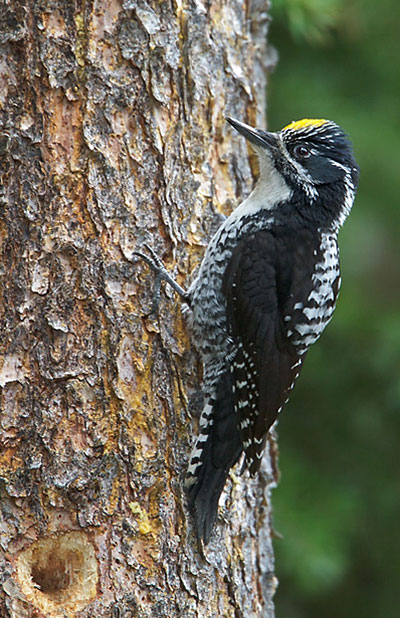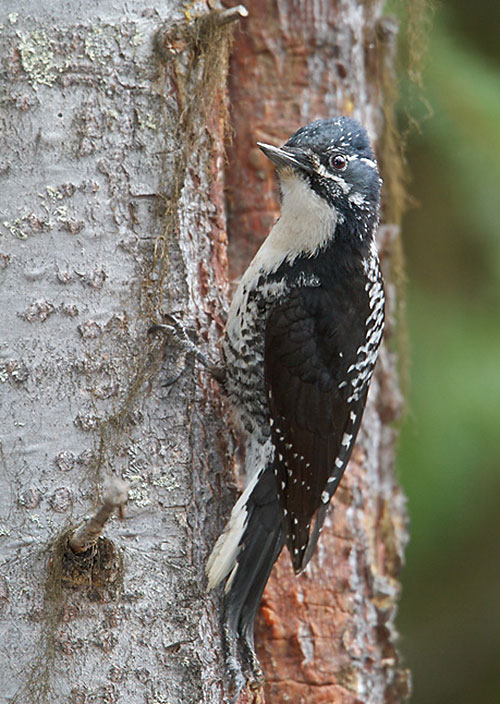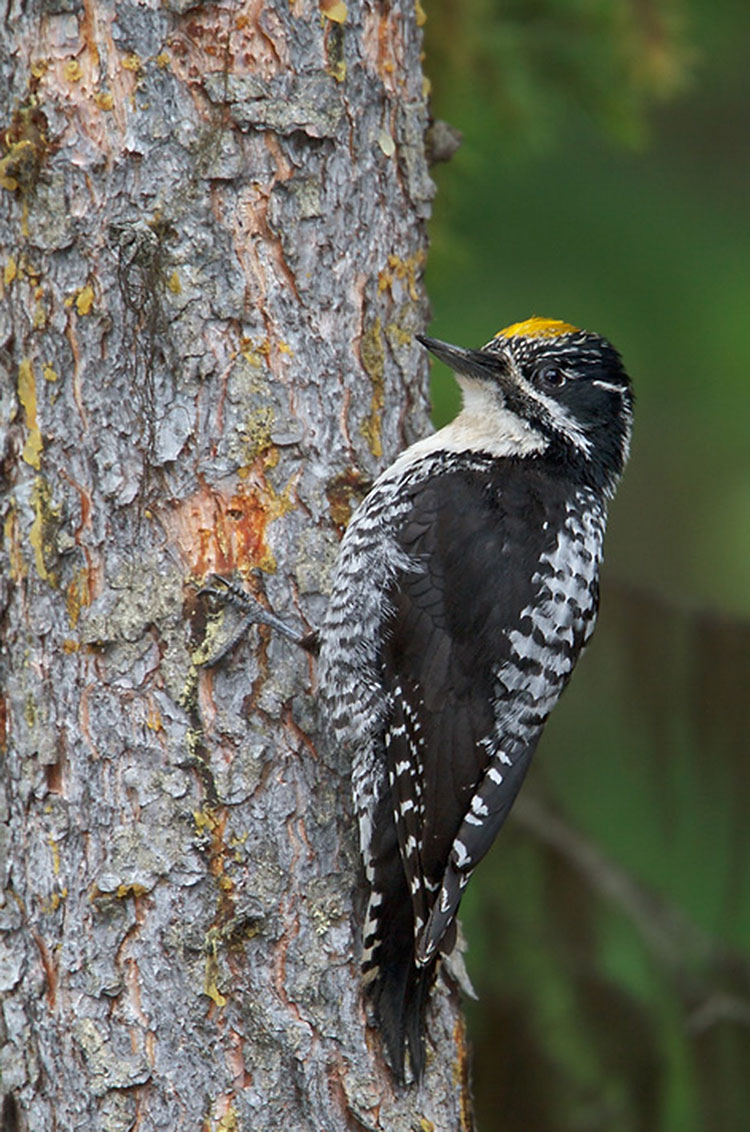The American Three-toed Woodpecker lives up to its name, having only three instead of four toes on each foot. It is also unusual among North American woodpeckers in that it has no red in its plumage. American Three-toed Woodpeckers are broadly distributed within the range of spruce forest, their preferred habitat.
As avid consumers of bark beetles and wood-boring beetles, American Three-toed Woodpeckers help maintain the health of forests. Studies have shown that individual birds may consume thousands of larvae per day.
On this page
Description of the American Three-toed Woodpecker
BREEDING MALE
The American Three-toed Woodpecker has black wing coverts, dark brown flight feathers barred with white, a black and white barred back, and white stripes on either side of a black face patch.
Male has a yellow crown patch.

Photograph © Glenn Bartley
Female
Female lacks yellow crown patch.
Seasonal change in appearance
None.
Juvenile
Similar to adults, but browner.
Habitat
Coniferous forests, especially spruce.
Diet
Insects.
Related: Why do woodpeckers peck wood?
Behavior
Forages on tree trunks by looking under flaking bark.

Range
American Three-toed Woodpeckers are resident across much of Canada and parts of the western U.S.
Fun Facts
Once considered the only woodpecker to live in both North America and Europe, the American Three-toed Woodpecker has now been split from the European form and is considered a separate species.
The northern range and forest habitats of the American Three-toed Woodpecker make it difficult to survey using standard Breeding Bird Survey routes, so its population is not well measured.
Vocalizations
Not very vocal, the American Three-toed Woodpecker occasionally makes a “pik” call similar to that of the Downy Woodpecker, or a few other rare sounds.
Similar Species
The Black-backed Woodpecker has a black back. No other woodpeckers have yellow crown patches.
Nesting
The American Three-toed Woodpecker’s nest is placed in an excavated cavity of a dead tree.
Number: 4. Color: White.
Incubation and fledging:
?- Young hatch at about 12-14 days.
– Young fledge (leave the nest) in 22-26 days, but associate with the adults for some time.


